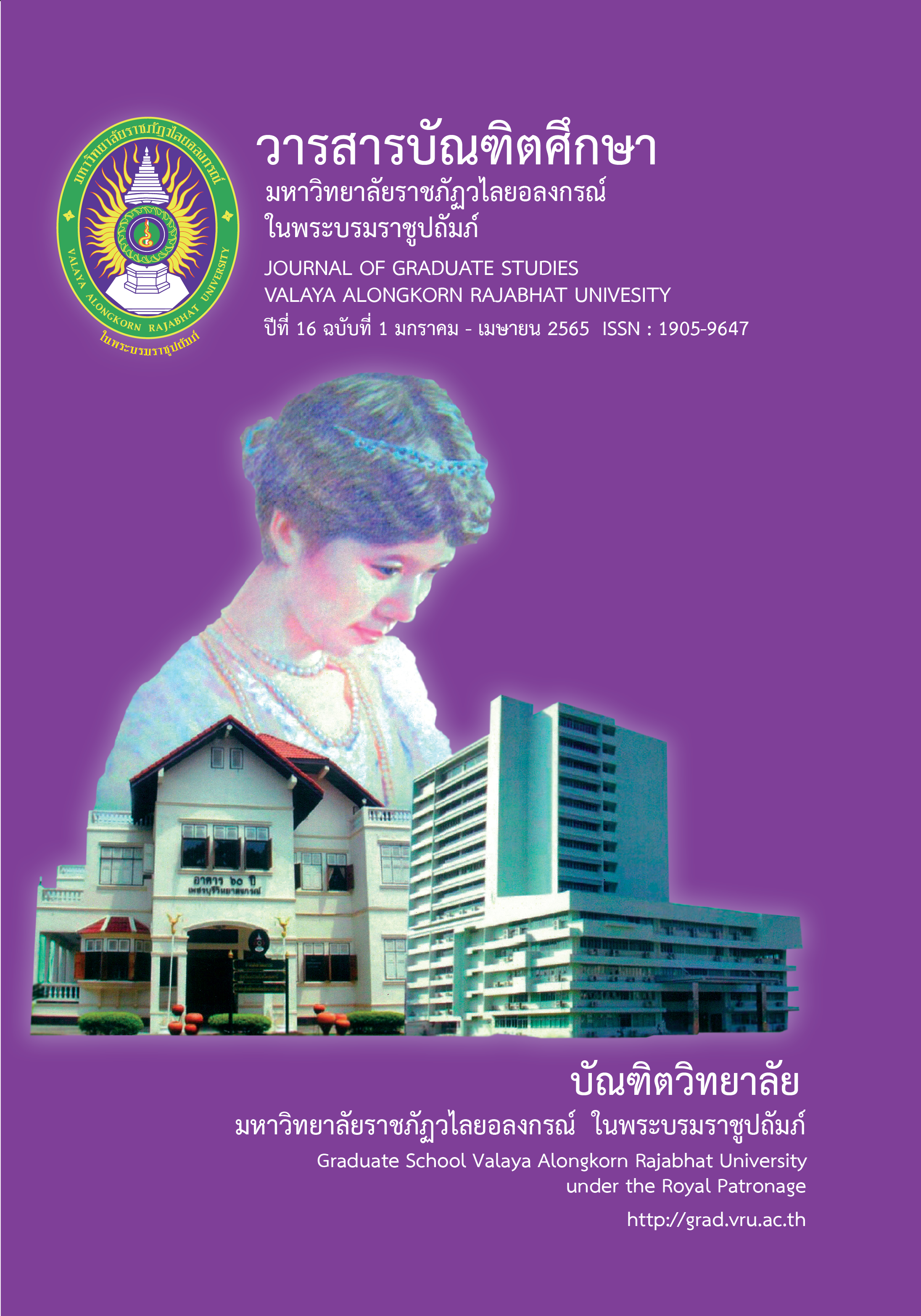THE STRATEGY FOR ESTABLISHING THE ORIGINAL ART IDENTITY OF CHAO PANG KHAM IN NONG BUA LAMPHU PROVINCE, THAILAND
Main Article Content
Abstract
The purposes of this study were to study the traditional art of Chao Pang Kham of Nong Bua Lam Phu Province and to determine the strategy of creating the identity of the traditional art of Chao Pang Kham Nong Bua Lamphu Province. Research 2 phase. Phase 1research. Use qualitative research methods. Target group 30 people. The instrument used in the research was a Semi-Structured Interview. Content analysis. Phase 2 proceed as follows: step 1 use SWOT technique. Target group 10 people. The research instruments used questionnaire. Content analysis. Step 2 qualitative research. Target group 30 people. The instrument used issues in formulating strategies and recordings from group discussions and in data analysis. Step 3 quantitative research. Population 10 people. The instrument used the suitability and feasibility assessment form.
The results of the research showed that: 1) The results of the study of the traditional art of Chao Pang Kham consist of 4 periods Include: (1) Prehistoric times, (2) Dvaravati art, (3) Khmer art, (4) Lan Xang to Chao Pang Kham. 2) The results of strategy formulation of creating a traditional art identity in Chao Pang Kham include: topic 1 research and promotion of the dissemination of knowledge about traditional arts. Topic 2 promote and develop the space for traditional art performances and learning resources. Topic 3 encourage creativity original arts when evaluating suitability and feasibility, passing the average of 3.51 points on all issues.
Article Details

This work is licensed under a Creative Commons Attribution-NonCommercial-NoDerivatives 4.0 International License.
บทความทุกเรื่องได้รับการตรวจความถูกต้องทางวิชาการโดยผู้ทรงคุณวุฒิ ทรรศนะและข้อคิดเห็นในบทความ Journal of Global of Perspectives in Humanities and Social Sciences (J-GPHSS) มิใช่เป็นทรรศนะและความคิดของผู้จัดทำจึงมิใช่ความรับผิดชอบของบัณฑิตวิทยาลัย มหาวิทยาลัยราชภัฏวไลยอลงกรณ์ ในพระบรมราชูปถัมภ์ กองบรรณาธิการไม่สงวนสิทธิ์การคัดลอก แต่ให้อ้างอิงแหล่งที่มา
References
Boonterm, T. (2007). kānphatthanā kānčhatkān yutthasāt khō̜ng mahāwitthayālai Khō̜n Kǣn Phutthasakkarāt sō̜ngphanhārō̜ihāsip 2550 [The Strategic Management Development of Khon Kaen University for 2007]. Bangkok: Chulalongkorn University.
Decharin, P. (2007). krabūankān bō̜rihān yutthasāt [Strategic Management Process]. Retrieved from http://www2.diw.go.th/Policy/news/pdf/%E0%B8%82%E0%B9%89%E0%B8%AD%E0%B8%A1%E0%B8%B9%E0%B8%A5%E0%B8%9A%E0%B8%A3%E0%B8%A3%E0%B8%A2%E0%B8%B2%E0%B8%A2.pdf.
Hongpakdee, S. (2005). krabūankān tham hatthakam thō̜ngthin hai klāi pen sinkhā thīralư̄k samrap nakthō̜ngthīeo : kō̜ranī sưksā bān bō̜ sāng ʻamphœ̄ san kamphǣng čhangwat Chīang Mai [The commoditization of local crafts as tourist souvenirs: a case study of Bor Sang Village, San Kamphaeng District, Chiang Mai Province]. Chiang Mai: Chiang Mai University.
Mekaew, N. (2012). thanon chāi khōng mư̄ang chīang khān : kāntham watthanatham hai pen sinkhā phư̄a kānthō̜ngthīeo ʻamphœ̄ chīang khān čhangwat lœ̄i [Chaikhong Street: Cultural Commodification for Tourism in Chiangkhan District, Loei Province]. Khon Kaen University.
Muangsri, P. (2013). kō̜ng khāo / kratip khāo nai thāna thī pen sinkhā thāng Watthanatham [Kongkhao/Kratibkhao as a cultural commoditization]. Khon Kaen: Khon Kaen University.
Na Ubon, B. (2016). sinlapin phư̄nbān phūmpanyā ʻĪsān [Folk artists, Isan wisdom]. Retrieved from https://www.isangate.com/new/isan-food/15-art-culture/artist/525-bampen-na-ubon.html.
Nong Bua Lamphu Provincial Office, Strategy and Information Group for Provincial Development. (2016). yutthasāt kānphatthanā čhangwat nō̜ng būa lam phū yīsip pī (Phō̜.Sō̜. sō̜ngphanhārō̜ihoksip - sō̜ngphanhārō̜ipǣtsip) [Development strategyNong Bua Lamphu Province, 20 years (2017-2037)]. Nong Bua Lam Phu.
Suwan, S. (2011). kānkamnot yutthasāt [Strategy formulation]. Nakhon Pathom: Kasetsart University Kamphaeng Saen Campus.


